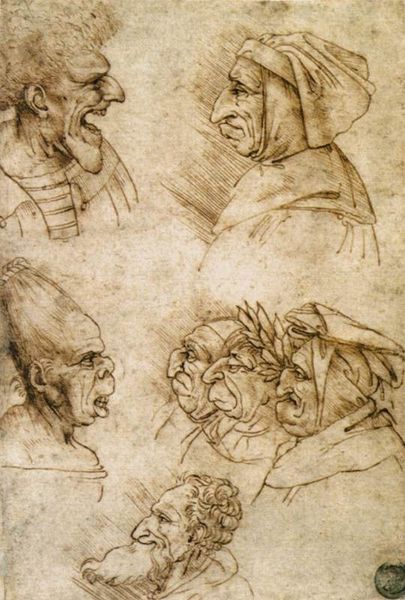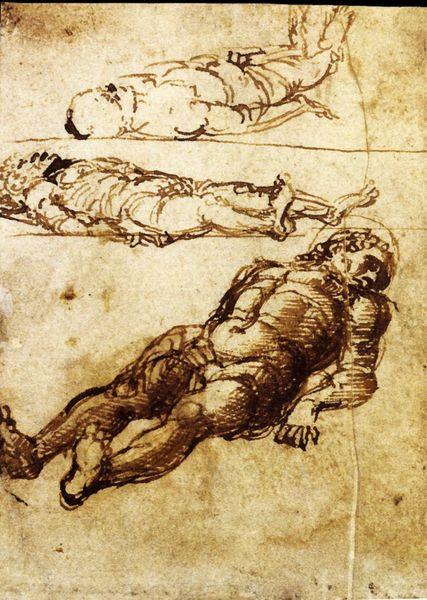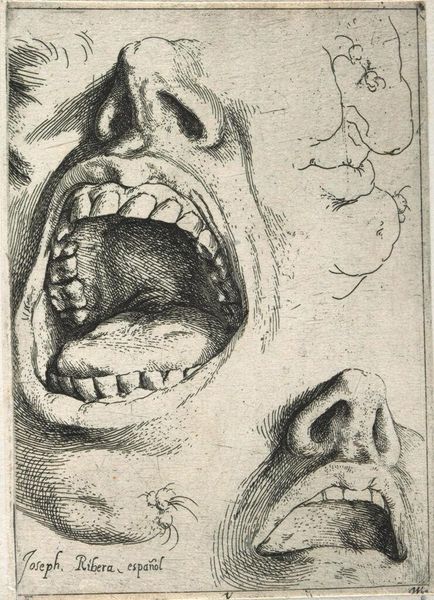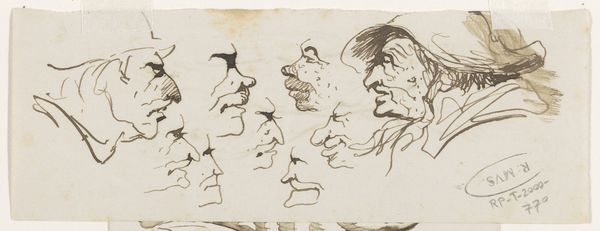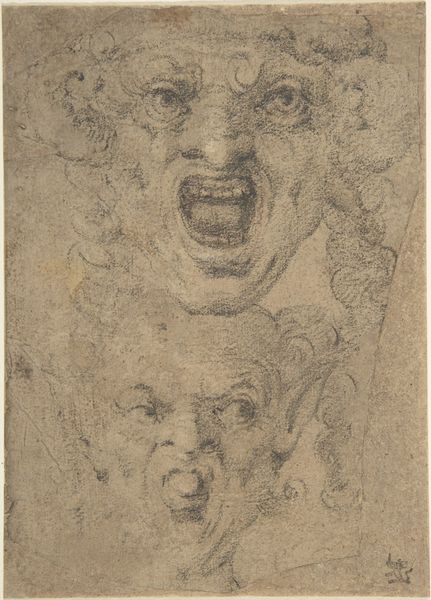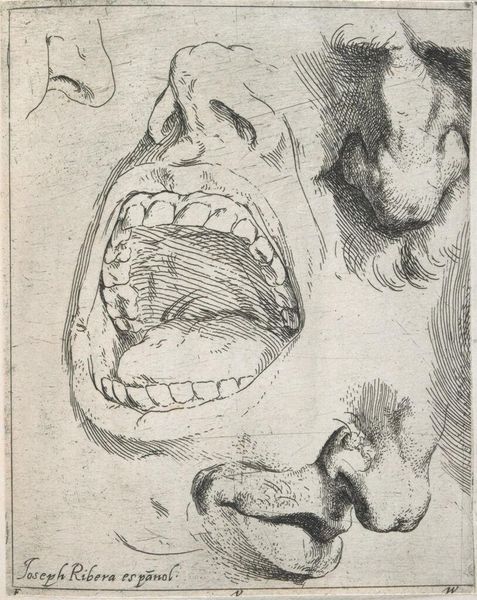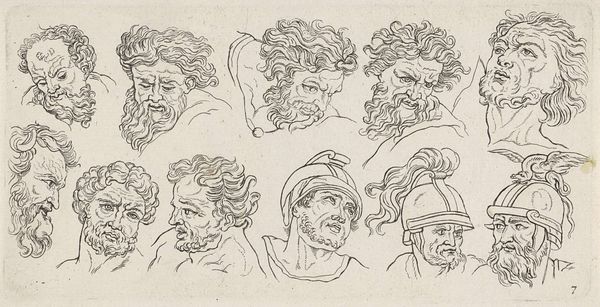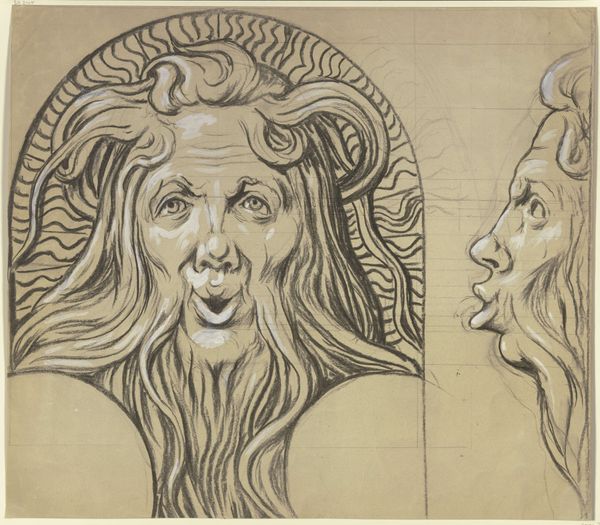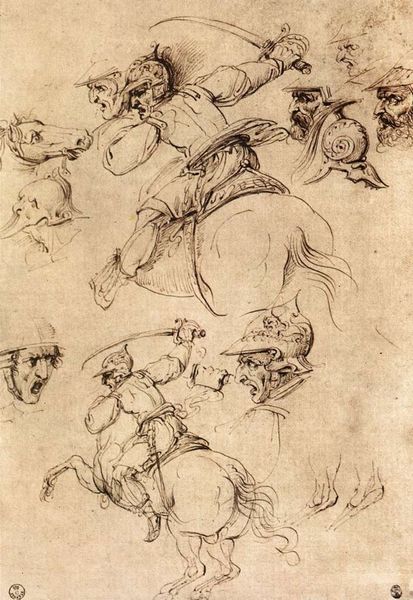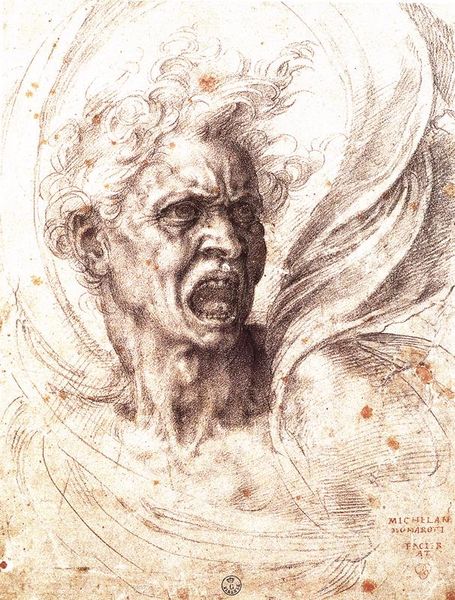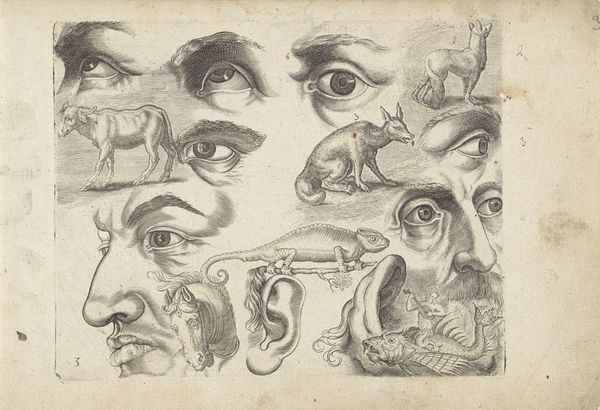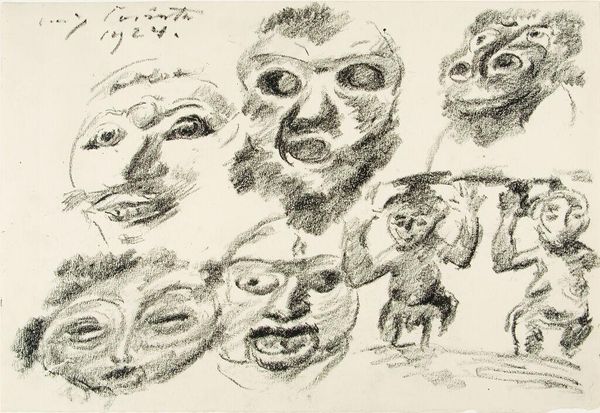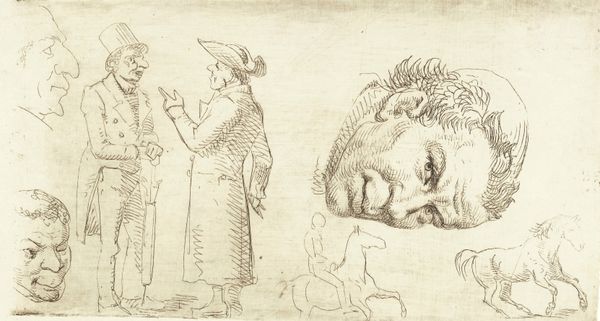
drawing, pencil
portrait
drawing
pencil sketch
mannerism
figuration
11_renaissance
pencil
line
academic-art
italian-renaissance
grotesque
Dimensions: 25.5 x 35 cm
Copyright: Public domain
Editor: This is Michelangelo's "Studies of Grotesques," a drawing in pencil from around 1530, currently held at the British Museum. They are kind of haunting, each face with its own distinct expression...What sort of visual language is he employing? Curator: Look closely at these faces. Michelangelo isn't just drawing funny faces. He is channeling something ancient. The grotesque has roots that intertwine with pagan rituals, mystery cults, and folk traditions where masks and exaggerated features allowed for symbolic possession. They were thought to tap into hidden worlds. Notice the top left figure, the lines suggest horns or protrusions. Do you think that connects with classical images of satyrs or even demons? Editor: Possibly. It is fascinating that they seem to be a blend of human and perhaps animal or mythological elements, carrying these older echoes. I initially thought it was just caricature. Curator: Michelangelo, in his time, was deeply involved in Neo-Platonism and ideas of inner vision. I wonder if these sketches reflect a personal quest to capture the shadows, the less "divine" parts of our nature…almost Jungian, in a way. They mirror, perhaps, the psyche’s hidden chambers. Where do you see these figures appearing – are they comic relief, cautionary tales, or something else? Editor: I like that--the psyche's hidden chambers. Perhaps they aren't easily categorizable, but meant to capture fleeting expressions or evoke certain states. Thanks for showing me a different layer to them. Curator: And thank you for pointing me back to Jung; I forgot that connection.
